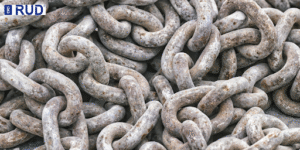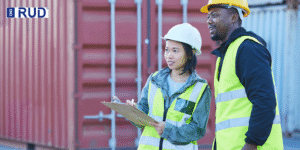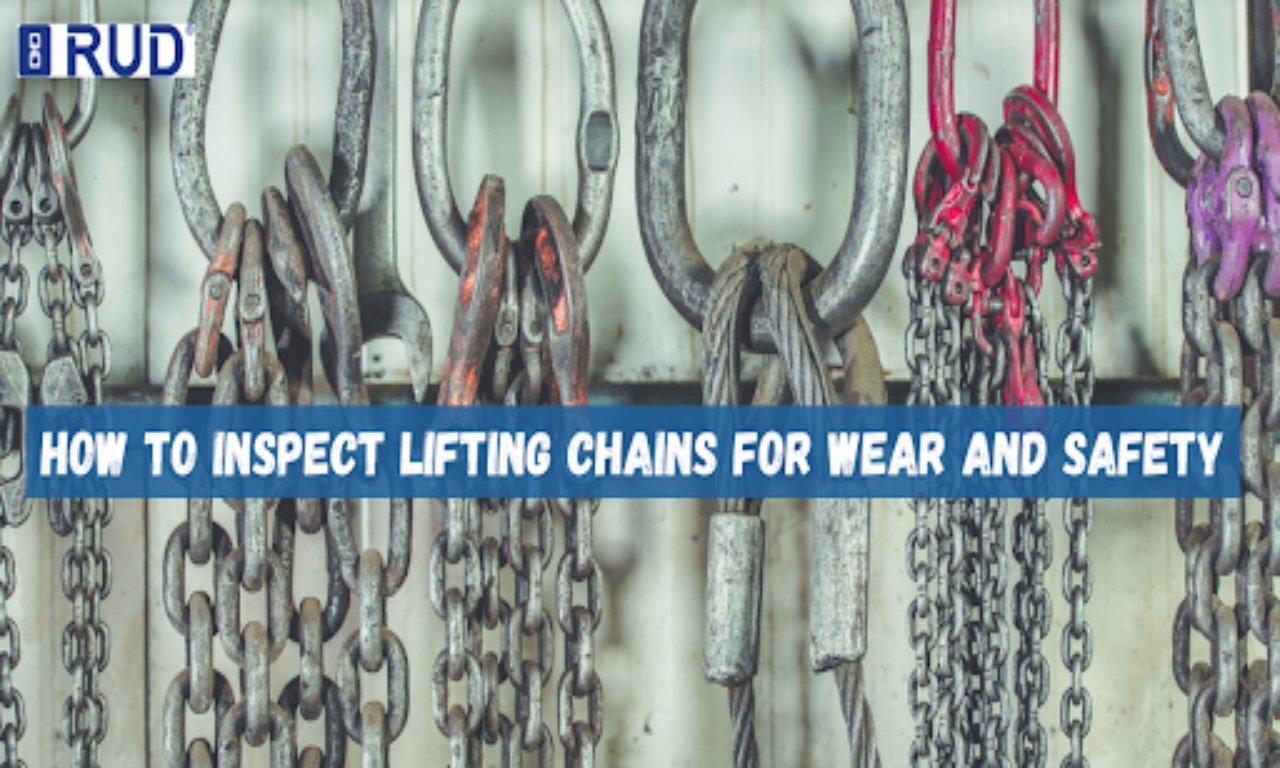How do you inspect lifting chains for wear and safety? You look at the chain for damage. But that’s not enough. You need to know what wear actually looks like and when a chain becomes unsafe to use.
Today, you’ll learn the warning signs of chain wear, the safety checks that catch problems early, and how often inspections should happen. This knowledge prevents equipment failures and keeps your team safe during lifting operations.
But what happens if you skip these checks? Skipping regular chain inspection creates serious risks. For example, equipment can fail without warning and cause injuries, expensive downtime, and endless paperwork. That’s where proper inspection procedures come in. Following guidelines like those from RUD Chains protects your operations and your crew.
Read on to learn the complete process.
What Does a Worn Chain Look Like?
A worn chain shows specific damage patterns you can spot during inspection. The most common signs include stretched links, visible cracks, twisted or bent sections, and rust or corrosion eating into the metal.

Let’s be honest here. Most operators miss these warning signs because they develop gradually. Here’s what each type of wear looks like up close.
- Link Stretching: When does a chain become too stretched to use? Any noticeable elongation beyond the original length means the chain needs retirement. You can measure this by comparing the current length against the manufacturer’s specifications.
- Surface Damage: Cracks and gouges create weak points that snap suddenly under normal loads. That’s because surface damage creates structural defects that can fail suddenly during lifting operations.
- Bent or Twisted Sections: Checking for deformed links reveals overloading history. In our experience working with mining operations across Queensland, twisted links are the most overlooked danger sign. The problem is that the chain can’t distribute weight safely when the links don’t sit flat.
- Metal Corrosion: To spot hidden wear, look closely at link bends where moisture collects. Once it starts, rust eats away at the metal from the inside out, and coastal sites see this accelerate three times faster than inland locations.
Now that you know what a worn chain looks like, let’s cover how to perform a thorough inspection.
Lifting Chain Inspection Takes Less Than 10 Minutes
Lifting chain inspection doesn’t need to eat up your day. A proper safety check takes under 10 minutes when you follow the right process.

But wait, there’s more to it than just looking at the chain. You need a systematic approach following proper chain inspection guidelines that catches problems before they become failures. Here’s the step-by-step inspection routine that keeps your operations safe.
- Clean the chain first: Dirt and grime hide cracks, deformation, and other damage. That’s why you should wipe down every link so you can actually see what you’re dealing with during the inspection.
- Run your hands along every link: Feel for rough spots, bends, or anything that doesn’t feel smooth. Your fingers will catch defects your eyes might miss, especially small cracks starting to form.
- Measure the chain length: Comparing the current length against the manufacturer’s specifications reveals a dangerous stretch. Our testing has shown that chains stretched beyond tolerance limits fail under loads they once handled easily.
- Inspect the connecting components: After checking the chain body, examine hooks, shackles, and master links separately. These connection points wear differently from the chain and often show damage first.
- Document everything: Your documentation should include the date, inspector name, and findings for every inspection. Without written records, you can’t prove the safety checks actually happened. This creates your compliance trail and helps track the chain condition over time.
Following these five steps consistently prevents chain failures and keeps your lifting operations running safely.
The Right Schedule for Periodic Inspections
Inspection frequency isn’t a guessing game. It depends on how hard you’re working your lifting chains and what regulations require.
For both safety and compliance, you need three levels of inspection.
Daily Visual Checks for Active Equipment
Quick visual inspections catch obvious problems in high-use environments where chains work hard every single shift. Before each use, look for visible damage, bent links, or anything that seems off. This pre-use inspection takes less than two minutes but prevents using a chain that’s already compromised.
Monthly Detailed Inspections
Thorough assessment for regular-use equipment means examining every link and connection point carefully for wear signs. Based on our work with infrastructure projects, monthly checks catch 80% of developing issues before they become failures. For this to work, a competent person must conduct these inspections and record the findings.
Annual Certified Inspections
Professional inspections provide a thorough assessment of the chain condition and remaining lifespan. And that’s where things get interesting with compliance requirements. In fact, annual inspections aren’t optional in Australian workplaces.
To meet these standards, a qualified inspector must perform certification testing and provide documentation for your safety records.
Stick to this schedule and you’ll maintain safe lifting operations while staying compliant with regulations.
Start Inspecting Your Lifting Chains With Confidence Today
You now understand what worn chains look like, how to inspect them properly, and when inspections should happen. This knowledge protects your team and equipment from preventable failures.
Regular lifting chain inspection isn’t complicated. It just requires consistency and attention to the warning signs you’ve learned today. When you do this, you’ll catch problems before they cause incidents.
Investing in quality lifting chains reduces wear and extends service life. This is exactly what RUD Australia delivers. We manufacture Grade 120 chains in Brisbane, combining 140+ years of German engineering with local expertise. Our team knows Australian industrial conditions inside out.
